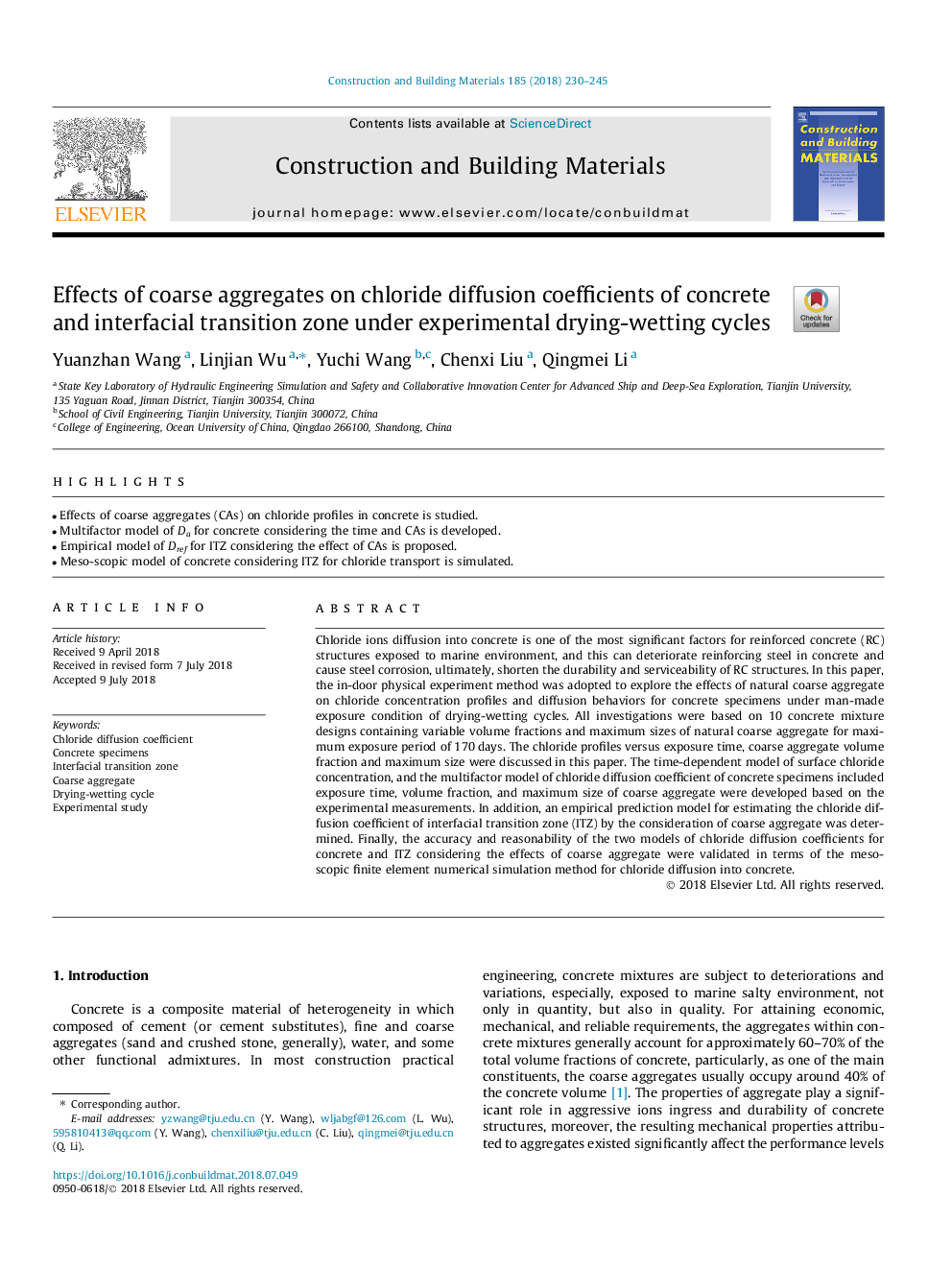| Article ID | Journal | Published Year | Pages | File Type |
|---|---|---|---|---|
| 6711737 | Construction and Building Materials | 2018 | 16 Pages |
Abstract
Chloride ions diffusion into concrete is one of the most significant factors for reinforced concrete (RC) structures exposed to marine environment, and this can deteriorate reinforcing steel in concrete and cause steel corrosion, ultimately, shorten the durability and serviceability of RC structures. In this paper, the in-door physical experiment method was adopted to explore the effects of natural coarse aggregate on chloride concentration profiles and diffusion behaviors for concrete specimens under man-made exposure condition of drying-wetting cycles. All investigations were based on 10 concrete mixture designs containing variable volume fractions and maximum sizes of natural coarse aggregate for maximum exposure period of 170â¯days. The chloride profiles versus exposure time, coarse aggregate volume fraction and maximum size were discussed in this paper. The time-dependent model of surface chloride concentration, and the multifactor model of chloride diffusion coefficient of concrete specimens included exposure time, volume fraction, and maximum size of coarse aggregate were developed based on the experimental measurements. In addition, an empirical prediction model for estimating the chloride diffusion coefficient of interfacial transition zone (ITZ) by the consideration of coarse aggregate was determined. Finally, the accuracy and reasonability of the two models of chloride diffusion coefficients for concrete and ITZ considering the effects of coarse aggregate were validated in terms of the meso-scopic finite element numerical simulation method for chloride diffusion into concrete.
Keywords
Related Topics
Physical Sciences and Engineering
Engineering
Civil and Structural Engineering
Authors
Yuanzhan Wang, Linjian Wu, Yuchi Wang, Chenxi Liu, Qingmei Li,
